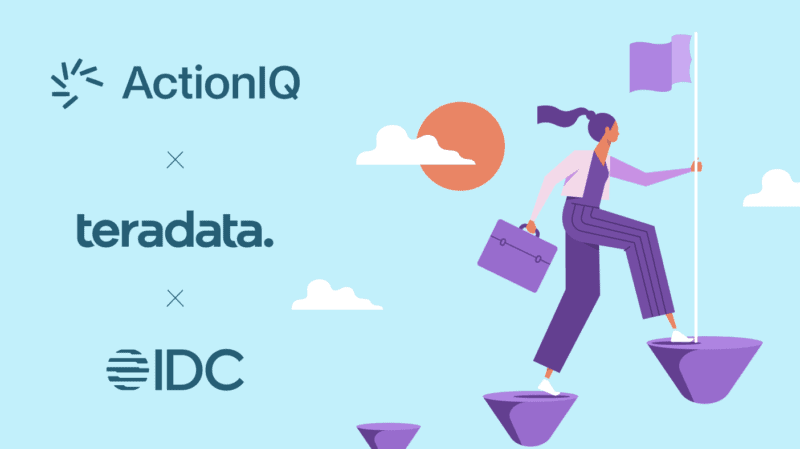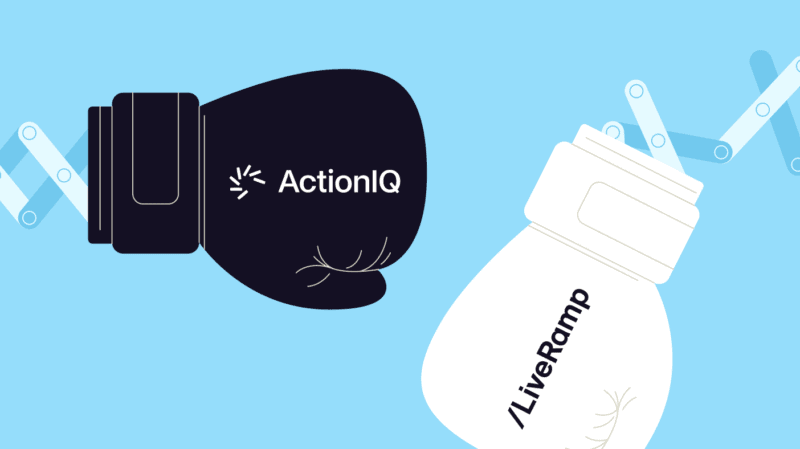How Hearst Harnesses First-Party Data to Drive Conversions

Given that Google recently pushed out its date to deprecate third-party cookies to late 2024, it’s tempting to think the reprieves will continue. But relying on continued postponements is a risky bet that no organization can afford to place if it wants to drive conversions — especially when you factor in the growing legislative trend toward protecting consumer data.
Sooner or later, the third-party cookie will crumble. And when it does, organizations will lose access to a data source they’ve relied on for more than two decades to target and advertise to consumers. There are still many unknowns about what a post-third-party-cookie world will look like, but one thing’s for sure: it will significantly impact the future of digital advertising.
Forward-thinking companies such as Hearst are proactively preparing for the shift and ensuring future growth. The company’s VP of Acquisition & Conversion, Christina Dalton, joined ActionIQ’s SVP of Product, Justin DeBrabant in our recent webinar, “How Hearst Harness First-Party Data for Customer Acquisition & Conversion.”
Read on to learn about three key strategies publishers can implement to drive conversions reliably in a post-third-party-cookie world.
How Hearst Harnesses First-Party Data to Drive Conversions
Maximize and Augment Your First-Party Data
Hearst is adopting a flexible, versatile identity strategy to maximize and augment its first-party data. Dalton refers to acquisition marketing use cases as the “holy grail” and a top priority for the company.
“There’s still such a large opportunity in terms of trying to convert more of our onsite content audience to known customers, and it’s a big challenge around trying to do that,” said Christina Dalton, VP, Conversion & Acquisition at Hearst. “It comes back to providing value; from a consumer standpoint, you have to earn the right to get them to sign off and give you their information.”
Organizations that prioritize first-party data, position themselves for resilience and growth in an environment where ongoing market and legislative changes and industry disruptions will be the norm.
“How you’re leveraging technology to hopefully help solve data silos is key with the rules and regulations that are changing,” Dalton observed. “When businesses are collecting first-party data, they need to be agile and set up for scale.”
Another challenge acquisition marketers face is finding ways to engage anonymous users and incentivize them to convert to known users. Hearst has implemented acquisition strategies such as free access offers or discounts in exchange for emails. From there, the company can engage these users more directly across a broader set of media platforms using lookalike modeling based on first-party data.
“Personalizing users’ experience and their path to authentication needs to be carefully mapped out,” said Justin DeBrabant, SVP of Product at ActionIQ. “Businesses need to better understand anonymous users to get them to convert and then think about different conversion strategies and ways to add value earlier in the funnel.”
Though Hearst’s current focus is on using its own first-party data, it sees integrating with an identity spine vendor as another strategy for supporting future growth. Identity providers historically used third-party data and many are still transitioning out of that practice, so some solutions might be more future-proof than others.
“Third-party spines increase addressability and the places where you can target users downstream,” said DeBrabant. “It’s key to remain flexible and agile in terms of how you leverage them and that you be able to leverage more than one as part of your solution.”
Regardless of your organization’s size or industry, having high-quality first-party data is the magic key that unlocks new ways to connect meaningfully with customers — with the ultimate goal of driving stronger brand engagement.
Unlock a Full Customer 360 View to Deliver Improved UX
Creating a customer 360 or full customer profile built on first-party data and connecting disparate data sources has been a key initiative for Hearst. (Explore our Customer 360 solution.)
“Finding the right technology to create a single customer view and one that’s potentially fluid in terms of the customer experience has been a big effort of ours,” Dalton noted.
One significant advantage Hearst’s consolidated customer data platform (CDP) provides is the ability to harness the full breadth of its customer data to deliver better user experiences (UX).
“We’re focused on needing to identify our own marketing channels of how we can better get the right offers in front of the right audience, and not just blast and scream these different offerings to our customer base,” Dalton said. “Gaining a consolidated customer data view to better orchestrate our marketing efforts has been critical.”
Over the past couple of years, Hearst’s ad spend has become more fragmented, ranging from TikTok to Pinterest and beyond. One of Hearst’s long-term key initiatives is to evolve its marketing approach and orchestrate omnichannel experiences — something its CDP will also help support, as Dalton noted.
“I think implementing tech and the CDP are going to help us get there,” Dalton said. “We’re really excited about being able to build and scale that further out.”
A consolidated customer view provides the foundation that empowers organizations to more easily and quickly create audience segments and deliver customer experiences that drive stronger brand engagement.
Self-Service Accessibility to Activate and Discover Audiences at Scale
Technology can remove some of the barriers to implementing CX strategies, but it’s also critical to have the people and processes around it to get the most out of it. Giving teams the ability to access data to discover audiences and orchestrate personalized customer experiences is key to achieving scalability and future growth.
“You need to democratize data throughout the organization so you can be an agile organization,” DeBrabant said. “You need to empower non-tech teams to ask questions of the data, build audiences and get insights.”
Achieving scalability with campaigns is critical, especially for large organizations such as Hearst, which has multiple brands under its umbrella.
“Scalability is really critical for us because of the fact that we have so many brands and we have so many products,” said Dalton.
The search for the next best audience to promote never ends, but each journey can be much quicker and more effective when marketing and data are intertwined.
“The organizational structure is so pivotal in terms of being able to support that kind of agility and workflow,” Dalton said. “If you have people operating in silos, then your marketing is going to remain very siloed, so I think this is the crux that brings it all together.”
When organizations combine repeatable processes with people and technology, they gain the agility required to deliver experiences that deepen customer engagement. (See how ActionIQ delivers advanced CX solutions to empowers your teams.)
“We had all these disparate data sources, and it was challenging to grow, scale and support our products based on the best CX possible,” Dalton said. “The CDP has been really important for us to help aggregate, build and scale our first-party data across our 25+ brands in the most agile way possible.”
Check out the full webinar for more insights on how publishers can harness their first-party data to drive conversions and new customer acquisition.
Learn More About How to Drive Conversions With First-Party Data
Download The Enterprise Guide to Acquisition Marketing Powered by First-Party Data to learn how you can pivot your strategy to a first-party approach to ensure growth and scalability.
We also invite you to contact us directly to get your questions answered.




